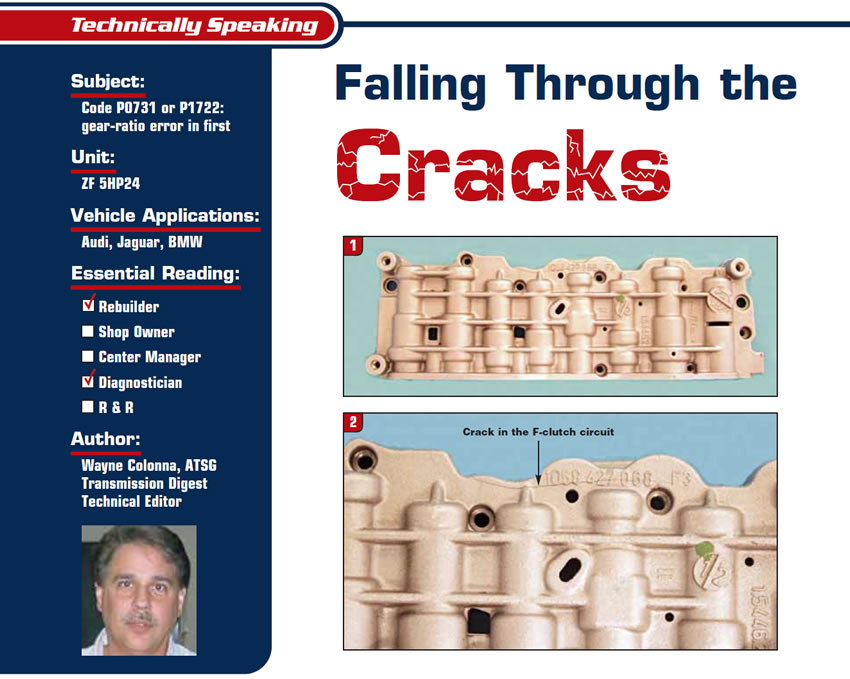
Technically Speaking
- Subject: Code P0731 or P1722: gear-ratio error in first
- Unit: ZF 5HP24
- Vehicle Applications: Audi, Jaguar, BMW
- Essential Reading: Rebuilder, Diagnostician
- Author: Wayne Colonna, ATSG, Transmission Digest Technical Editor
There are times when you miss the cause of a problem during a rebuild, sometimes even after one or two more times of getting into the unit. Then suddenly you find the problem and you may say, “Oh, jeez, that one fell through the cracks on me.”
And that is exactly what happens with a ZF 5HP24 transmission in an Audi, Jaguar or BMW. This problem will produce code P0731 (or P1722 with Jaguars) and it means a gear-ratio error in first. And it also may be accompanied by a complaint neutralizing at a stop when hot. The technicians on Transmission Rebuilders Network Worldwide (TRNW) are all too familiar with this problem. Yet, technicians around the country frequently allow this problem to fall through the cracks, which is why I thought of writing an article about it.
The problem is that a crack develops in the upper valve body (see figures 1 and 2). The crack shown in Figure 2 is easy to see; however, in many instances this crack is difficult to detect unless you know to look for it. A little prying with a screwdriver in the worm tracks could open the crack, making it visible. In some instances, the cracked piece will break off during this inspection.
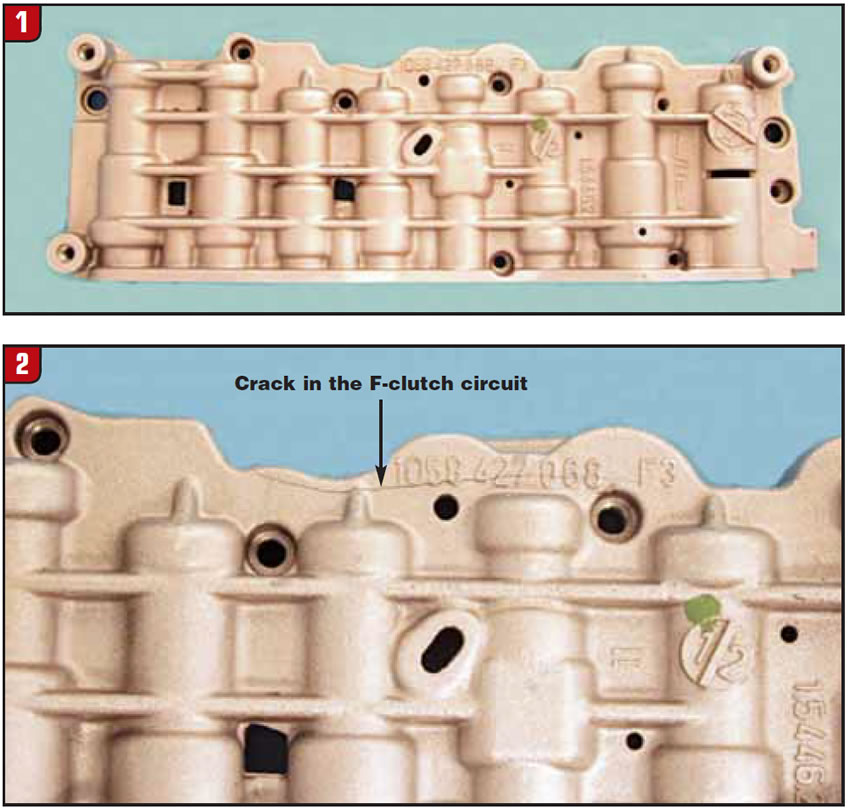
When you flip this body over and trace the circuit, you will discover that it is the F-clutch circuit that is getting dumped (see figures 3 and 4).
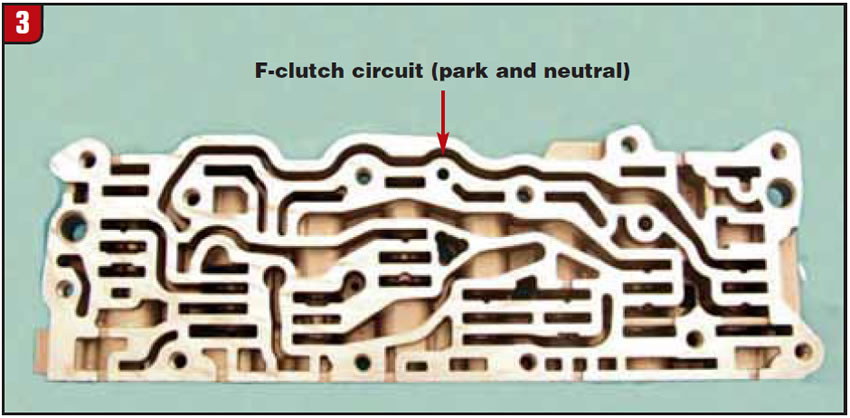
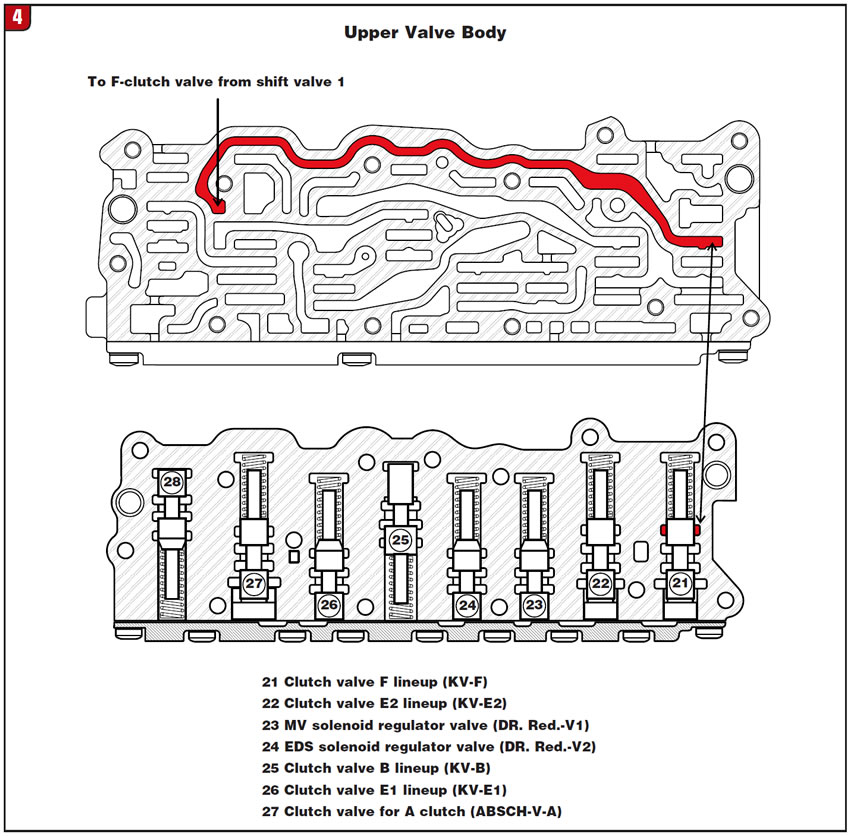
But when you look at the application chart in Figure 5 you discover that the F clutch is applied in only park, reverse and neutral. So why is it that reverse is not affected and forward is? This is a good question. The answer is that the F clutch is charged in park and neutral via the F-clutch valve (#21 in Figure 4) but in reverse is fed line pressure through the reverse valve (#7 in Figure 6). This would explain why reverse is not affected.
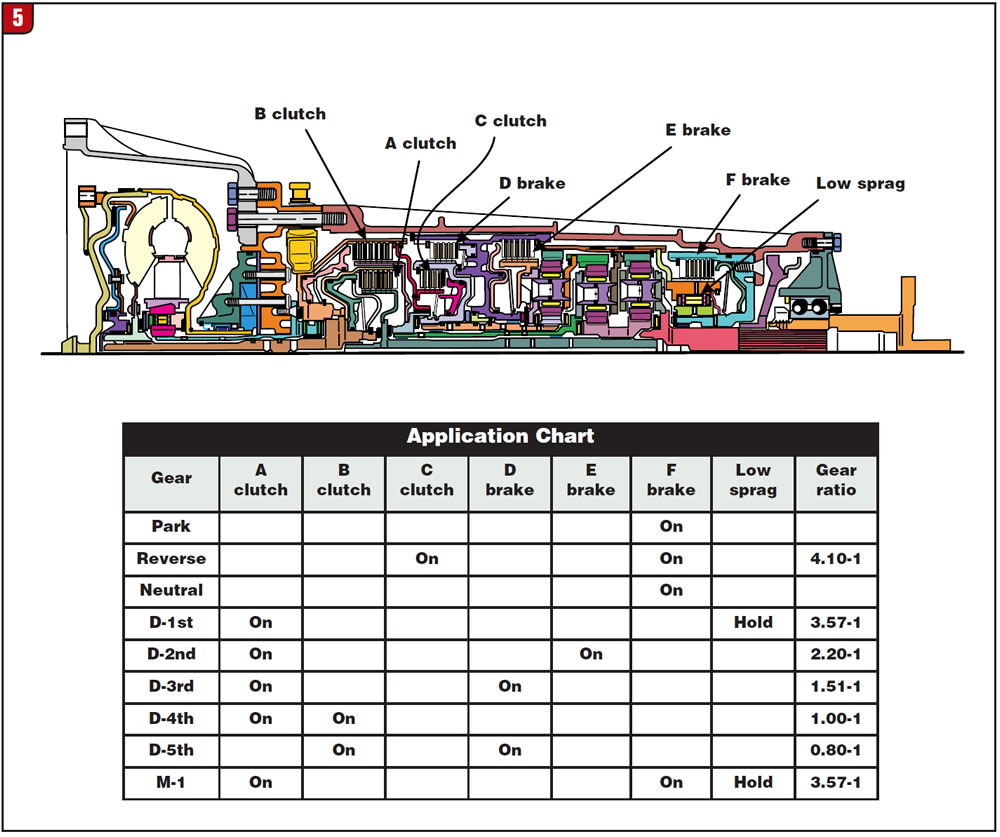
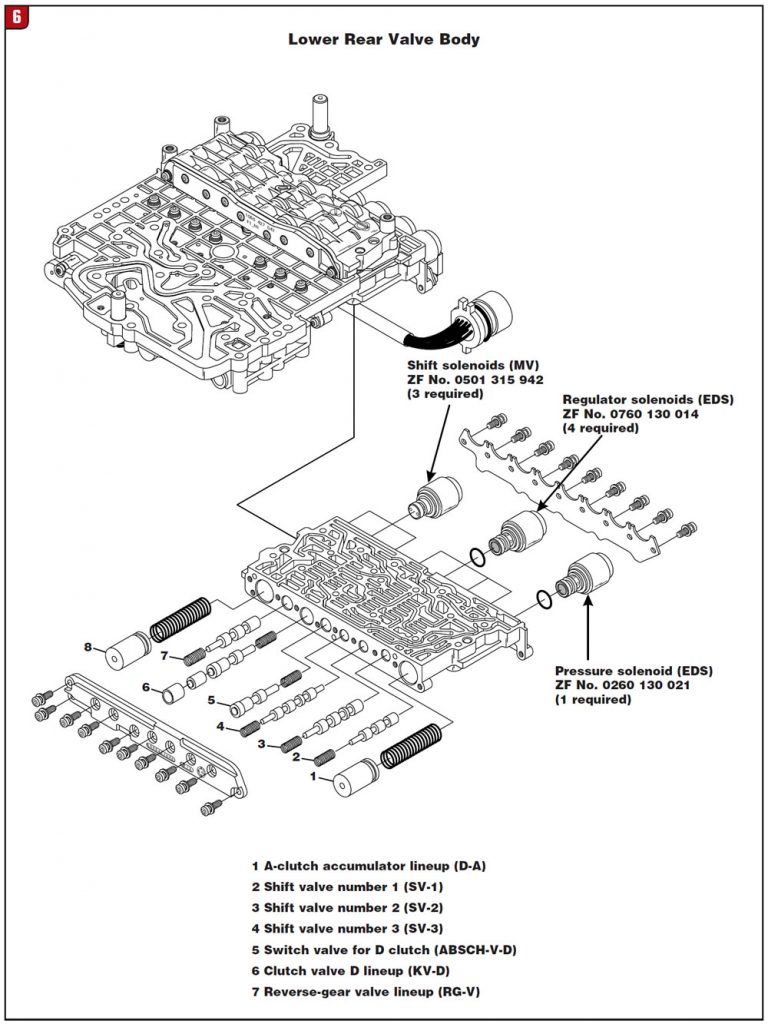
But when the transmission is in first gear, pressure is being supplied to the closed F-clutch valve from shift valve 1 (#2 in Figure 6) through the circuit that is cracked. This circuit is connected to the A clutch in first gear only. So the loss of pressure going to the F-clutch valve is enough to cause the A clutch to release at idle speed when hot and slip the clutch on takeoff, causing the P0731 gear-ratio error in first yet not affect 2nd, 3rd or 4th.
Another reason why this problem can fall through the cracks is that the A clutch has some of its own problems that occur more frequently than the cracking of the upper-valve-body casting. One is that the A-clutch accumulator piston tends to crack (another crack – don’t you just love cracks?) as shown in figures 7 and 8. The original design of this piston has a center pedestal at the bottom that punches out over time and cracks the body. This will cause delayed engagements into drive and a flare on 5-4 kickdown. Depending on how bad the leak is, it also could cause the A clutch to release during idle speed when hot and slip the clutch on takeoff, causing code P0731 to set. The C-clutch accumulator piston also is known to crack in the same way and will affect reverse with delayed engagements and slipping.
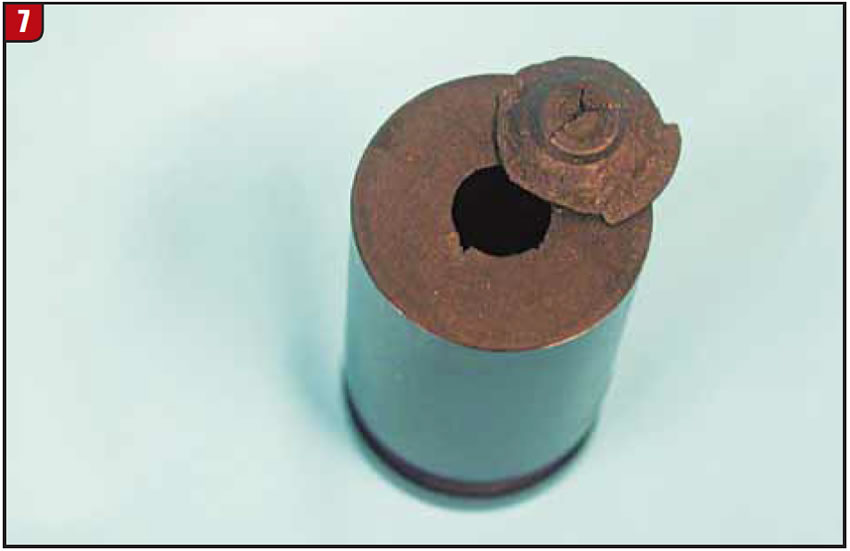
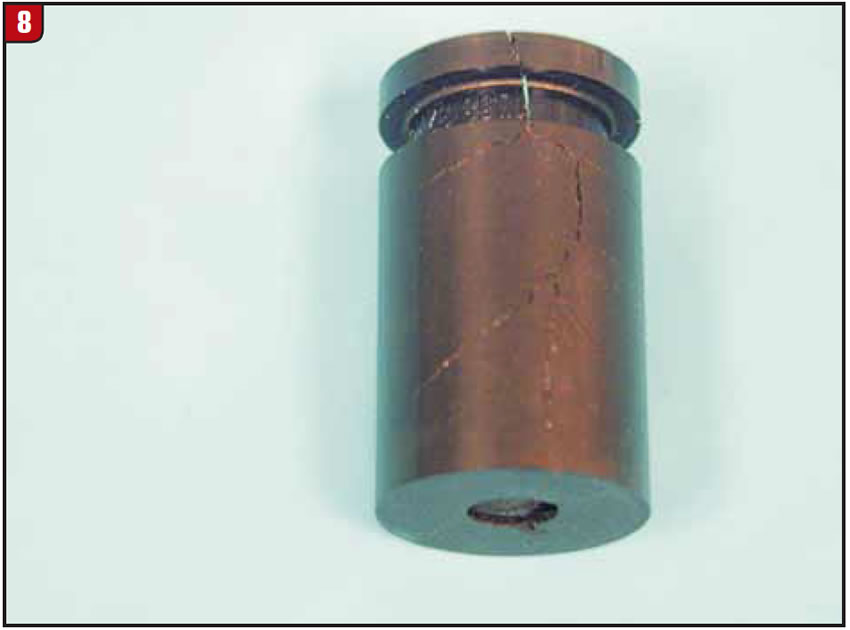
There is now an updated piston (on the left in Figure 9) that eliminates the original bottom-center pedestal stop. This new-design piston has a split pedestal that has slightly increased thickness and diameter. The original ZF part number remains the same for ordering from an authorized ZF distributor for all models except Audi, which has an aluminum version that resembles the first design (on right in Figure 9). Both damper pistons – the updated hard-plastic design with split-pedestal stop and the aluminum version with single center-pedestal stop – are dimensionally the same and will interchange. The major difference is price. The aluminum version wholesales for about $27; the hard-plastic design wholesales for about $4. The part number for the hard-plastic design is 1058-327-017; the aluminum piston’s part number is 1058-327-087.
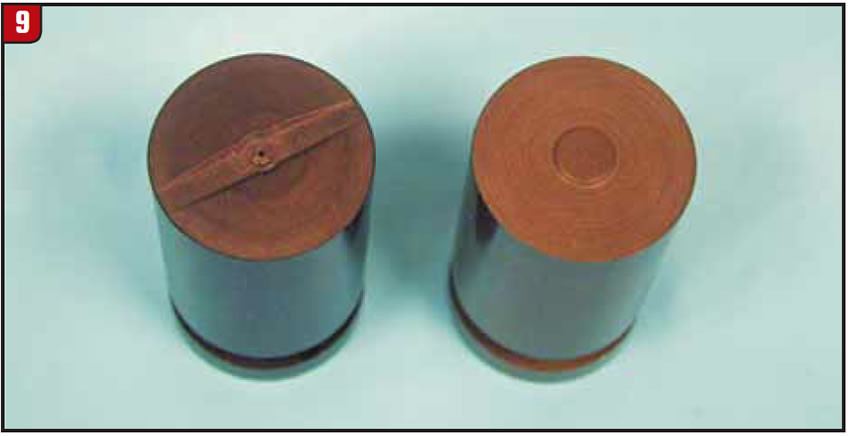
One other area that causes A-clutch failure and can be overlooked easily is in earlier models that use a rubber damper (bladder) in the pressure circuit for the EDS 5 solenoid (see Figure 10). This rubber damper is situated in the channel plate. It ruptures in such a way that during medium-to-heavy throttle, the rubber blows open, dumping EDS-solenoid pressure. This shuts down the A-clutch-pressure circuit, placing the transmission into neutral. It is an odd feeling to take off from a standstill, get into the throttle and suddenly dump to neutral, or to have a kickdown from 5th go to never-never land.
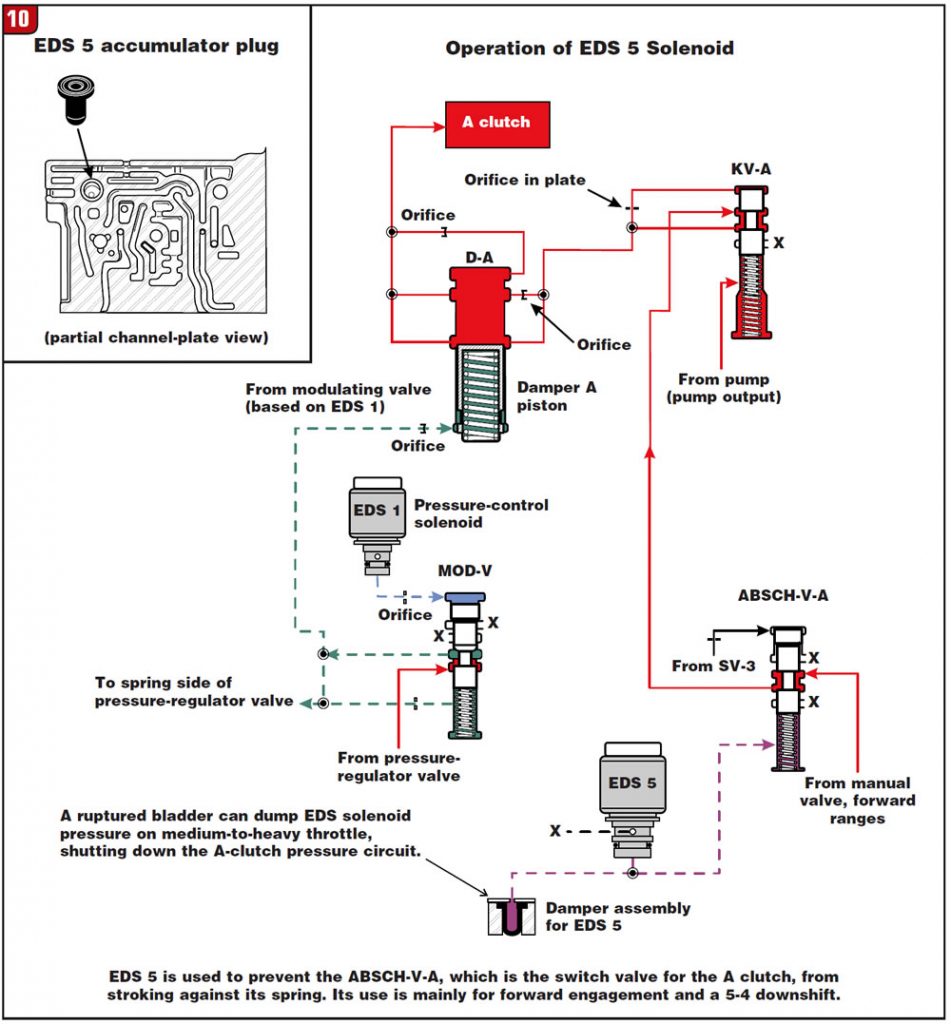
And remember, these computers jack line pressure when they see the transmission slipping, which is one of the reasons we see the A-clutch drum blown at the top by the clutch-pack retaining snap ring. This is also why we see the upper-valve-body casting cracking.
It reminds me of the problem with the AX4S transaxle, in which the forward clutch was applied in park at 120 psi during initial startup. The aluminum piston would crack and the forward clutches would slip. Instead of changing the computer strategy, Ford switched to a steel piston to handle such a violent application.
In the ZF 5HP24 the F clutch is applied in park. So if line pressure becomes elevated for any reason, in time the casting cracks, revealing the weak link in the F-clutch circuit.














